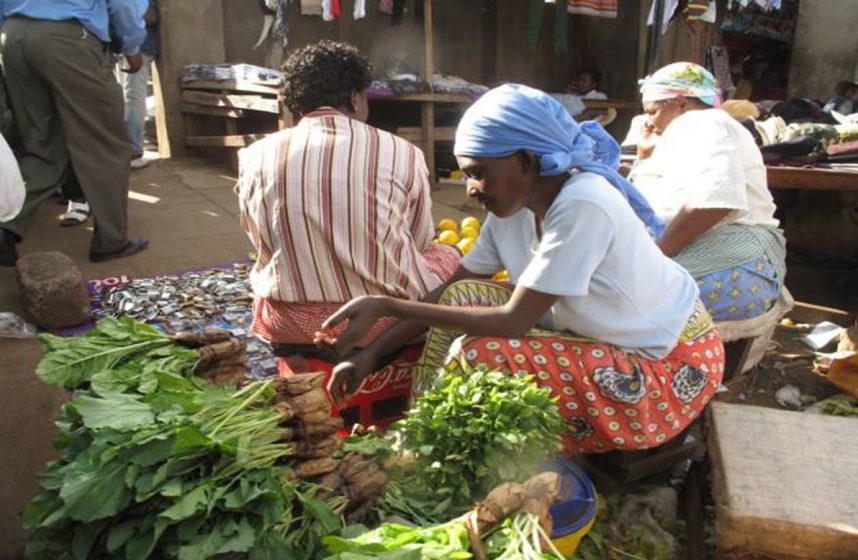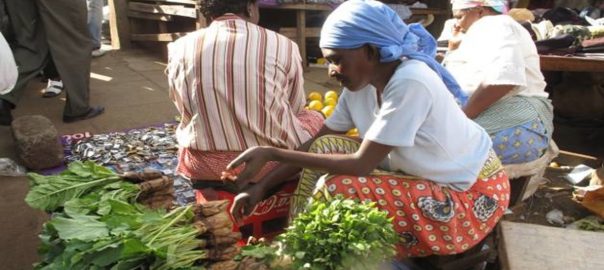The informal economy’s contribution to urban housing, as contentious as it is, is substantial, especially in offering rural-to-urban migrants and marginalised groups in the urban built environment the opportunity to experience urban existence.
In the dynamic landscape of Africa, a fascinating interplay unfolds between urban informality and the transformative promise of primate cities. Mark Jefferson defined a primate city in 1939 as the largest in its country, province, state, or region, and disproportionately larger than any others in the urban hierarchy: at least over twice the size and significance of the next largest city. These urban giants, atop the hierarchy, wield immense influence over their nations and control the flow of natural resources, aligning with the aspiration of their political leaders to modernise their cities to make them globally competitive and smart (Azunre et al., 2022).
To achieve the strategic goal of positioning Africa’s primate cities to drive the continent’s socio-economic transformation requires deliberate policies that create synergy and a durable balance between the formal and informal sectors of their national economies (Kleniewski, 2006). These efforts should aim at achieving global competitiveness and smart city aspirations without marginalising and antagonising the informal sector, where workers and economic units engage in a range of activities that formal arrangements, either legally or in practice, insufficiently cover (Azunre et al., 2022). The informal sectors within these bustling metropolises thrive, significantly contributing to shaping the growth, resilience, and character of their national economies.
Notably, cities such as Cairo, Lagos, and Johannesburg, irrespective of their historical challenges with urban distress, stand as unrivalled centres of economic, political, and cultural gravity. They draw people, resources, and aspirations, while their formal structures often coexist with vibrant and resilient informal economies. Nezar AlSayyad (2004) argues that “many features of the formal/informal dichotomy owe their origin to unresolved issues in sociologically historic processes” (Ibid., 25). Other sociological thoughts define informality as “the result of the ongoing process of globalisation and the application of neoliberal capitalist practices that exclude large segments of the population” (Davis, 2006; Shatkin, 2007).
Ananya Roy (2014), in this regard, argues that although “the urban growth of the 21st century is taking place in the developing world, many of the theories of how cities function remain rooted in the developed world”, hence the disconnect between theoretical insights and reality. While urban sociology provides a new epistemology for understanding urban informality, in the contemporary realm, it does so in a way that privileges social, economic, and political issues (Samper, 2014: 1). It does not shed much light on the role of the urban form in the process of creating the informal city, obscuring how these informal realms, from street markets to artisan workshops, harbour entrepreneurial spirit, adaptability, and resourcefulness that support national economies.
Africa, with its rich tapestry of urban experiences, grapples with both challenges and opportunities in advancing its megacity transformation projects. The continent’s urban landscape is defined by the rapid pace of urbanisation and the complexities of its informal economies (Kleniewski & Thomas, 2019). From the bustling alleys of Marrakech to the sprawling townships of Nairobi, informal activities shape the very fabric of these cities. The intricate dance between primate cities and urban informality across the continent gives meaning to the vibrant interactions of street vendors, day-to-day petty traders in satellite markets, artisans, and small-scale entrepreneurs, which contribute to the metamorphosis of these urban giants into global competitors.

Domestically, the contributions of the informal economy are huge; it employs those who cannot find jobs in the formal sector, provides a source of income for low- or unskilled workers, and serves as a safety net when unemployment is high (Elgin & Elveren, 2019). The sector increases workers’ skill levels, thereby increasing human capital accumulation in the overall economy. Thus, by providing job opportunities for low-income workers, the informal economy may, to some extent, improve income distribution (ibid.). It also acts as a subsidy for the cost of living of actors in the formal economies of primate cities (Portes & Sassen-Koob, 1987; Kleniewski, 2006: 164), while providing access to cheaper goods and services for the survival of its urban population.
On the global stage, these subsidies from the contributions of the informal economy have a marginal benefit that goes even further through export regimes and trade mechanisms to help multinational corporations lower their costs of doing business and the costs of producing goods and services for consumption in the global north (ibid.). It highlights the diverse significance and resilience of the informal economy domestically and within the international arena.
In sub-Saharan Africa, the data on the contributions of the informal economy to national growth and development is instructive. According to the International Labour Organisation (ILO), in 2015, the informal economy accounted for 60% of all economic activities in Sub-Saharan Africa, and in 2019, 80% of all employment in the region was in the informal sector (ILO, 2019; Nyamadzawo, 2020).

The employment creation potential of the informal economy in Africa is equally broad. In 2018, the International Labour Organisation (ILO) affirmed that the informal sector employs 89.2% of the total labour force in both agriculture and non-agriculture sectors. The non-agriculture sector recorded a significant 76.8%. In central Africa, without agriculture, the sector’s share of employment is 78.8% and 91% with agriculture (ILO, 2018; Azunre et al., 2022). In East Africa, the contributions stood at 76.6% without agriculture and 91.6% with agriculture. The figures for southern and western Africa were 36.1% and 87% without agriculture, respectively, and 40.2% and 92.4% with agriculture included. In the year 2000, the sector contributed gross value additions to the total GDPs of Benin, Burkina Faso, Senegal, and Togo, including agriculture, at 71.6%, 55.8%, 51.5%, and 72.5%, respectively (ibid.).
The informal economy’s contribution to urban housing, as contentious as it is, is substantial, especially in offering rural-to-urban migrants and marginalised groups in the urban built environment the opportunity to experience urban existence. The most notable form of informal housing, popularly called “slums,” provides not only accommodation but refuge to millions of urban dwellers, especially rural-to-urban migrants in the global south. Not oblivious to the contested use of the term ‘slum’ as referenced in development and urban discourse (Huchzermeyer, 2011), in this context, it describes manifestations of not only urban poverty but also physical expressions of urban inequality, based on location in cities, and how they are serviced—or not—and how legal they are considered to be (Khan et al., 2023: 88). Nigeria’s share of the urban population accommodated in slums as of 2015, according to United Nations (UN) data, was 50.2%. That of Ethiopia was 73.9%; Uganda’s 53.6%; and Tanzania’s 50.7%. Ghana and Rwanda’s stand at around 37.9% and 53.2%, respectively (UN, 2022, cited in Sultana et al., 2022).
These data speak to the utility of informal settlements in the urban built environment in Africa and partly account for the permanence of slums as a feature of primate cities in the global south, their contribution to animating the city, the sustenance of human life, and the existence of socio-cultural networks in cities. It is also suggestive of the fact that the conversation about the ideational influence of the framing of the problem of slums and informal settlements in cities will continue to uncover assumptions and biases that contribute to urban inequality, marginalization, and socio-spatial othering (Khan et al., 2023: 74) as inherent challenges that confront city development initiatives.
In essence, beyond the web of complex rationalities embedded in urban planning and development in Africa, primate cities on the continent remain dependable agents of sustainable development with the potency of their informal pulse to sustain their resilience, character, traditions, and innovative transformation potentials that reflect multiple aspirations and a defined focus on global and national development discourses.
Ibrahim Wallee
Accra
References:
AlSayyad, N. (2004). Urban informality as a ‘new’way of life. Urban informality: transnational perspectives from the middle east, Latin America, and South Asia, 7-30.
Azunre, G., Amponsah, O., Takyi, S., Mensah, H., & Braimah, I. (2022). Urban informalities in sub-Saharan Africa: A solution for or barrier against sustainable city development. World Development, 152. doi:https://doi.org/10.1016/j.worlddev.2021.105782.
Davis, M. (2006). Planet of Slums. London; New York: Verso.
Elgin, C., & Elveren , A. (2019, April). Informality, Inequality, and Feminization of Labor. Amherst, MA, USA.
Gutiérrez-Romero, R. (2021). Inequality, persistence of the informal economy, and club convergence. World Development, 139, 1-66.
Home, R. (2014). Shaping Cities of the Global South: Legal histories of planning and colonialism. In S. Parnell, & S. Oldfield, The Routledge Handbook on Cities of the Global South (pp. 75-85). New York: Routledge.
Huchzermeyer, M. (2011). Cities with ‘Slums’: From informal settlements eradication to a right to the city in Africa. Cape Town: UCT Press.
Huchzermeyer, M. (2014). Troubling Continuities: Use and utility of the term ‘slum’. In S. Parnell, & S. Oldfield, The Routledge Handbook on Cities of the Global South (pp. 86-97). New York: Routledge.
ILO. (2018). Formalizing Domestic Work. Geneva: International Labour Organization (ILO). Retrieved from http://www.ilo.org/wcmsp5/groups/public/—ed_protect/—protrav/–travail/documents/publication/wcms_536998.pdf.
ILO. (2019). Women and Men in the Informal Economy: A Statistical Picture. Geneva: International Labor Organization (ILO).
Khan, S., Lintelo, D., & MacGregor, H. (2023). Framing ‘slums’: global policy discourses and urban inequalities. Journal of Environment and Urbanization, 35(1), 74-90. doi:10.1177/09562478221150210
Kleniewski, N. (2006). Cities, Change, and Conflict (3 ed.). Belmont, CA: Thomson Wadsworth.
Kleniewski, N., & Thomas, A. (2019). Cities, Change, and Conflict: A political economy of urban life (5 ed.). New York: Routledge.
Nyamadzawo, L. (2020, November 09). The Wagner Planner. Retrieved from THE WAGNER PLANNER: Telling the Story of Cities: https://wp.nyu.edu/wagnerplanner/2020/11/09/inclusive-informal-sector-policies-in-african-cities-the-challenge/
Parnell, S., & Oldfield, S. (2014). The Routledge Handbook on Cities in the Global South. New York: Routledge.
Portes, A., & Sassen-Koob, S. (1987). Making It Underground: Comparative Materials on the Informal Sector in Western Market Economies. Ameri-can Journal of Sociology, 93, 30-61.
Roy, A. (2014). Worlding the South: Toward a post-colonial urban theory. In S. Parnell, & S. Oldfield, The Routledge Handbook on Cities in the Global South (pp. 9-20). New York: Routledge.
Samper, J. (2014). Toward an epistemology of the form of the informal city: Mapping the process of informal city making. Journal of Informal Settlement Research.
Shatkin, G. (2007). Global cities of the South: Emerging perspectives on growth and inequality. Journal of Cities, 24(1), 1-15. Retrieved from https://www.sciencedirect.com/science/article/abs/pii/S0264275106000850
Sultana, N., Rahman, M. M., & Khanam, R. (2022). The effect of the informal sector on sustainable development: Evidence from developing countries. Business Strategy & Development, 5(4), 437-451.







Leave a Reply